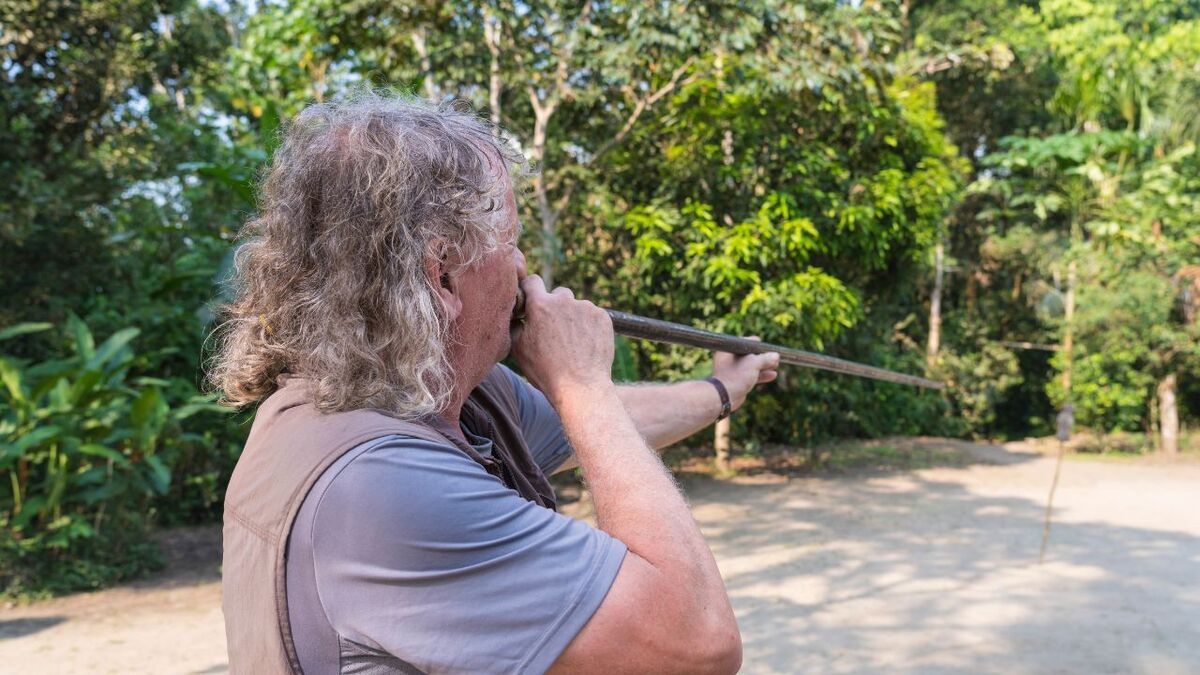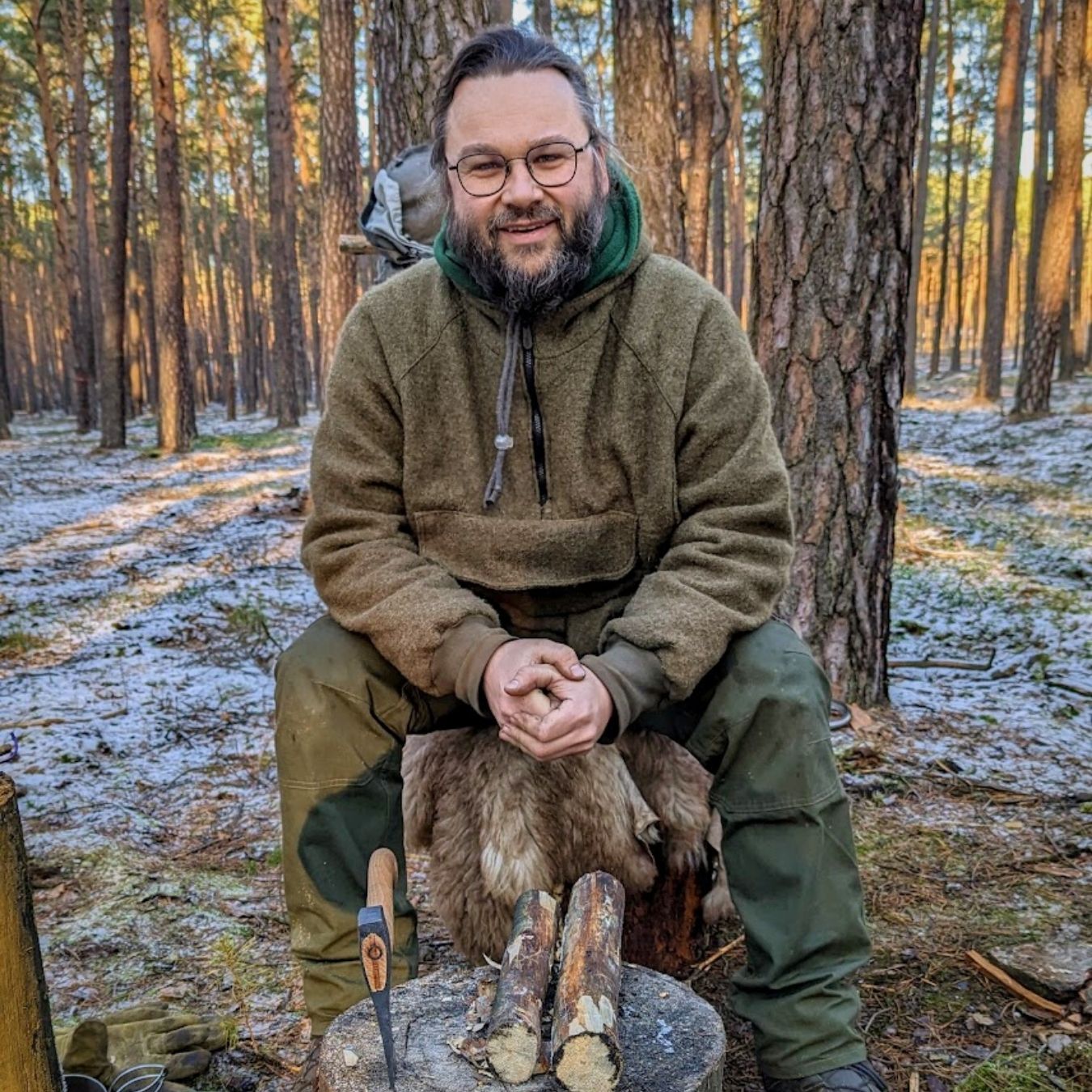
Blowgun
Nomen
Meaning
A blowgun is a long, narrow tube used for shooting projectiles, typically darts or arrows, by blowing into one end. In the context of survival, bushcraft, wilderness, camping, and hiking, a blowgun can be a useful tool for hunting small game or for self-defense. It is lightweight, portable, and silent, making it ideal for stealthy operations in the outdoors. Blowguns have been used by indigenous peoples around the world for centuries, and they continue to be a relevant and effective tool in the outdoor community. With proper training and practice, anyone can learn to use a blowgun effectively.

Examples
„I love using my blowgun to practice my aim and accuracy. It's a great way to improve my skills and challenge myself.“
„During our survival training, we learned how to make a blowgun using natural materials found in the wilderness. It was a fun and useful tool to have in our arsenal.“
„My friend and I were discussing different hunting techniques, and he mentioned using a blowgun to silently take down small game. It's a stealthy and efficient method.“
„I recently purchased a blowgun for my outdoor adventures. It's lightweight and easy to carry, making it a convenient tool for hunting and target practice.“
„While exploring the jungle, I came across a blowgun made by the indigenous people. It was fascinating to see their craftsmanship and learn about their hunting traditions.“
Origin
The word "blowgun" originates from the English language. It is a compound word formed by combining the words "blow" and "gun". The term "blow" refers to the act of exhaling forcefully, while "gun" refers to a weapon that propels projectiles.
Blowguns have their roots in various indigenous cultures around the world, including the Amazon rainforest, Southeast Asia, and parts of Africa. These cultures have used blowguns for hunting and self-defense for centuries.
The blowgun itself consists of a long tube, typically made from bamboo or other lightweight materials, with a small opening at one end for the user to blow into. The other end of the tube is where the projectile, usually a dart or arrow, is loaded.
Over time, blowguns have evolved and been adapted by different cultures. They have been used for various purposes, including hunting small game, fishing, and even in warfare. In recent years, blowguns have also gained popularity as a recreational activity and a tool for practicing precision shooting.
Today, blowguns are still used by indigenous communities and survival enthusiasts around the world. They offer a silent and effective means of hunting and can be a valuable tool in survival situations where ammunition may be scarce.
Synonyms
Blowpipe, Blow tube, Blow dart, Blowgun dart, Blowgun tube, Blowgun pipe
Antonyms
Suck, Inhale, Breathe in, Draw in, Gulp, Inspire, Absorb, Take in
Relatives
Dart, Projectile, Blowpipe, Blowgun hunting, Indigenous weapons, Blowgun darts, Blowgun accuracy
Historical and cultural importance
The blowgun, also known as a blowpipe, has a long history and cultural significance in various parts of the world. It is a weapon that has been used by indigenous peoples for hunting and self-defense for centuries.
In South America, blowguns have been used by tribes such as the Yanomami and the Amazonian tribes. These tribes have perfected the art of using blowguns to silently and accurately shoot darts at their prey. The blowgun has become an integral part of their culture and is often used in traditional ceremonies and rituals.
In Southeast Asia, the blowgun is commonly used by the Penan people of Borneo. They use it for hunting small game in the dense rainforests. The Penan have developed exceptional skills in using the blowgun, allowing them to hit their targets with remarkable accuracy.
Blowguns have also been used historically in other parts of the world. In Africa, the San people of the Kalahari Desert have used blowguns for hunting. In North America, Native American tribes such as the Cherokee and Choctaw have used blowguns for both hunting and warfare.
Today, blowguns are still used by indigenous peoples in these regions, preserving their cultural heritage and traditional hunting methods. Additionally, blowguns have gained popularity as a recreational activity and a tool for survival enthusiasts and bushcraft practitioners.
Understanding the historical and cultural significance of the blowgun helps us appreciate its role as a versatile tool and weapon in different societies throughout history.
More information about the term Blowgun
Introduction to Blowgun
A blowgun is a simple yet effective weapon that has been used by indigenous peoples around the world for centuries. It is a long tube, typically made from bamboo or other lightweight materials, through which projectiles are blown using the force of the breath. Blowguns are primarily used for hunting small game and birds, but they can also be used for self-defense in survival situations.
History and Cultural Significance
The origins of blowguns can be traced back to ancient times, with evidence of their use found in various parts of the world. Indigenous tribes in the Amazon rainforest, Southeast Asia, and Africa are known for their expertise in blowgun hunting. These tribes have developed unique techniques and skills, passing them down through generations.
Blowguns have played a significant role in the survival and cultural traditions of these indigenous peoples. They have been used to provide food for the community, as well as for ceremonial purposes and competitions. The skill required to accurately shoot a blowgun is highly respected within these cultures.
Construction and Components
A traditional blowgun consists of a long tube, usually around 4 to 9 feet in length, and a mouthpiece. The tube is typically made from bamboo due to its lightweight and durable nature. However, blowguns can also be made from other materials such as PVC or metal.
The mouthpiece of the blowgun is where the shooter places their mouth to blow the projectile. It is often made from a small piece of wood or plastic, shaped to fit comfortably in the shooter's mouth. Some blowguns also have a mouthpiece cover to protect it from dirt and debris.
Projectiles and Shooting Techniques
The projectiles used in blowguns are called darts or blowgun needles. These are typically made from lightweight materials such as bamboo skewers or thin metal rods. The darts are usually tipped with a small point or poison to increase their effectiveness in hunting.
Shooting a blowgun requires a combination of breath control, aiming, and technique. The shooter places the dart into the mouthpiece, takes a deep breath, and blows forcefully through the tube. The goal is to propel the dart with enough speed and accuracy to hit the target.
Uses in Survival Situations
In survival situations, a blowgun can be a valuable tool for hunting small game and birds. Its silent nature makes it ideal for stealthy hunting, allowing you to conserve energy and avoid alerting other potential prey.
Additionally, blowguns can be used for self-defense when faced with dangerous animals or hostile individuals. While not as powerful as firearms, a blowgun can still deliver a potentially incapacitating blow when used with the right projectiles.
Conclusion
The blowgun is a versatile and effective tool that has stood the test of time. Its simplicity and effectiveness make it a valuable asset for survivalists, hunters, and those interested in traditional skills. Whether you're exploring the wilderness or honing your bushcraft skills, the blowgun is a fascinating and practical addition to your arsenal.
Back to overview

